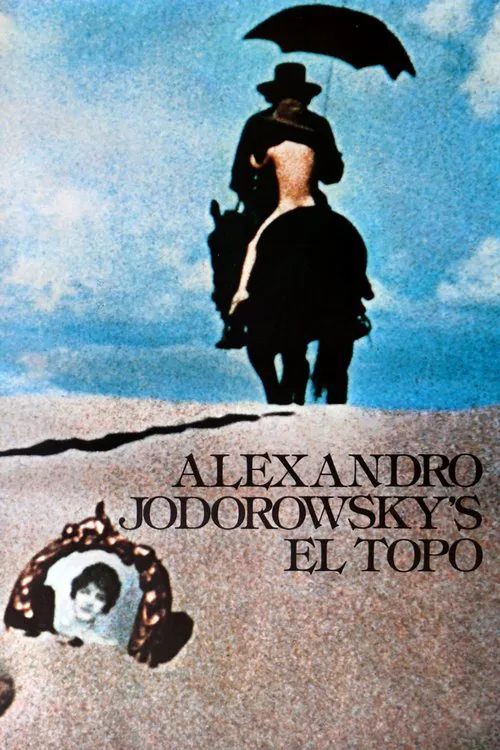El Topo

Trama
El Topo, directed by Alejandro Jodorowsky, is a 1970 surrealist western film that defies conventional narrative structures. Set in a post-apocalyptic desert environment, the film revolves around a blind gunslinger known as El Topo, who sets out on a transformative journey with his six-year-old son. This quest is marked by a series of enigmatic events and mystical connections that blur the lines between myth, reality, and the subconscious. The film begins with a sequence of graphic violence and sex, hinting at the brutal realities that lie ahead for the protagonist. El Topo, a self-proclaimed "spiritual gunslinger," seeks to confront the seven Warrior-Masters, a group of seemingly omnipotent figures who possess supernatural powers. El Topo's motivations for this journey remain unclear, adding to the air of mystery that pervades the film. As the story unfolds, El Topo is accompanied by his young son, who is drawn into the world of adult violence and spirituality. The narrative is characterized by fragmented sequences, often juxtaposing scenes of violence and intimacy with seemingly unrelated events, such as El Topo's interactions with a group of nuns. These juxtapositions reflect the fluid boundaries between spirituality, violence, and the human condition. One of the key elements of El Topo's journey is his relationship with his son. The boy is initially depicted as an innocent, carefree child who must confront the harsh realities of the world as they travel through the desert. El Topo's methods of teaching his son are often unconventional, involving violent confrontations and philosophical musings. This portrayal of paternal-son dynamics adds a layer of depth to the narrative, exploring themes of masculinity, childhood, and the struggle to maintain innocence in a world ravaged by violence. Throughout the film, Jodorowsky employs a distinct visual style, using stark desert landscapes as a backdrop to his narrative. El Topo's world is one of stark contrasts, where violence and beauty coexist in a delicate balance. This visual aesthetic is matched by a corresponding score, which incorporates elements of jazz, classical music, and folk instrumentation to create a unique sonic landscape. As El Topo navigates the desert terrain, he encounters an array of enigmatic characters, including the Warrior-Masters, a group of nuns, and a band of outcasts. These characters embody various aspects of human experience, from spirituality and redemption to violence and despair. Each encounter marks a turning point in El Topo's journey, forcing him to confront the complexities of his own identity and the nature of his quest. The Warrior-Masters, in particular, serve as a source of existential inquiry, posing questions about the nature of power, morality, and the human condition. These encounters are characterized by a sense of ambiguity, leaving the audience questioning the intentions and motivations behind El Topo's actions. This opacity is a hallmark of Jodorowsky's style, as he frequently blurs the lines between character development and symbolism. Ultimately, El Topo's journey leads to a series of mystical encounters that blur the boundaries between reality and the subconscious. El Topo and his son reach a crossroads, where the young boy is required to bury his childhood totems, marking a rite of passage into adulthood. This moment serves as a poignant metaphor for the fragility of childhood and the inevitability of growth and transformation. In the aftermath of this event, the narrative collapses into a series of surreal vignettes, blurring the distinction between reality and dreams. El Topo remains an enigmatic figure, his motivations and desires shrouded in mystery. The film's ending is as unsettling as it is mesmerizing, reflecting the complexities and ambiguities that have defined the narrative. El Topo is a challenging film, one that defies easy interpretation or categorization. Jodorowsky's world is one of mysticism, violence, and existential inquiry, where characters and events are frequently subsumed by a larger symbolic framework. This film serves as a testament to the enduring power of surrealist cinema, offering a vision of a world that is both beautiful and unutterably strange.
Reseñas
Recomendaciones




